Learning Italian opens doors to a rich cultural heritage, beautiful travel experiences, and new career opportunities. Whether you’re a complete beginner or brushing up your skills, the right app can make all the difference. With so many language learning tools available, finding the best app to learn Italian can be overwhelming. In this guide, we’ve reviewed the top apps of 2025 to help you choose the one that suits your goals and learning style.
Ready to check out the best apps for learning Italian in 2025? First, let’s bring a taste of Italy to your table. Crafting your own meals is a perfect way to embrace the culture, and ReciMe simplifies it all. Save recipes from TikTok or Pinterest, map out your weekly meal plan, and generate aisle-organized shopping lists with a tap. Download ReciMe now, whip up some Italian magic, and then start your language journey!


1. Rocket
Rocket Italian is a comprehensive language-learning app that dives deep into both the structure and soul of the Italian language. The course offers lifetime access, so you can revisit lessons anytime without worrying about expiration dates. Users can practice speaking with confidence using advanced voice recognition, engage in real conversations through interactive dialogues, and get cultural context that goes far beyond grammar and vocabulary.
The app is designed to help learners develop long-term retention. Each lesson incorporates engaging reinforcement activities that use smart algorithms to detect weak spots and help you improve them. With thousands of audio recordings from native speakers and modules focused on grammar, pronunciation, and culture, Rocket Italian sets you up for both travel and meaningful conversations.
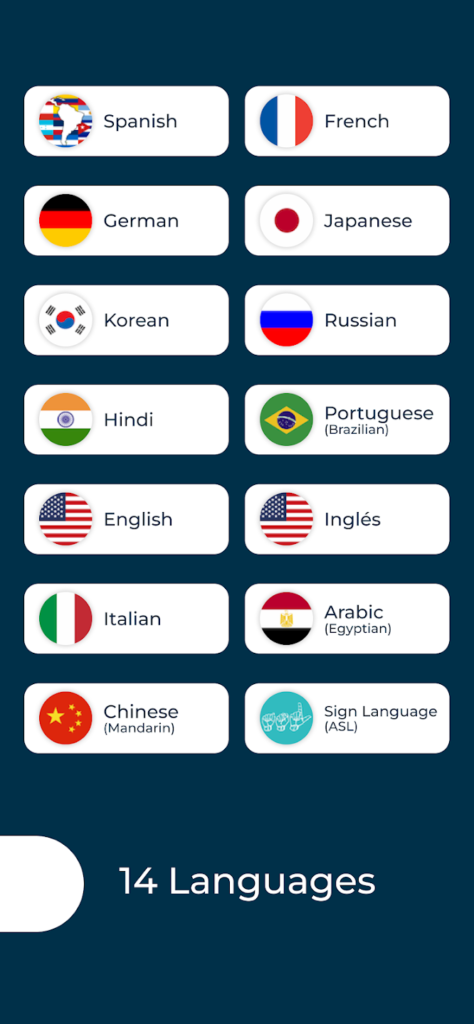
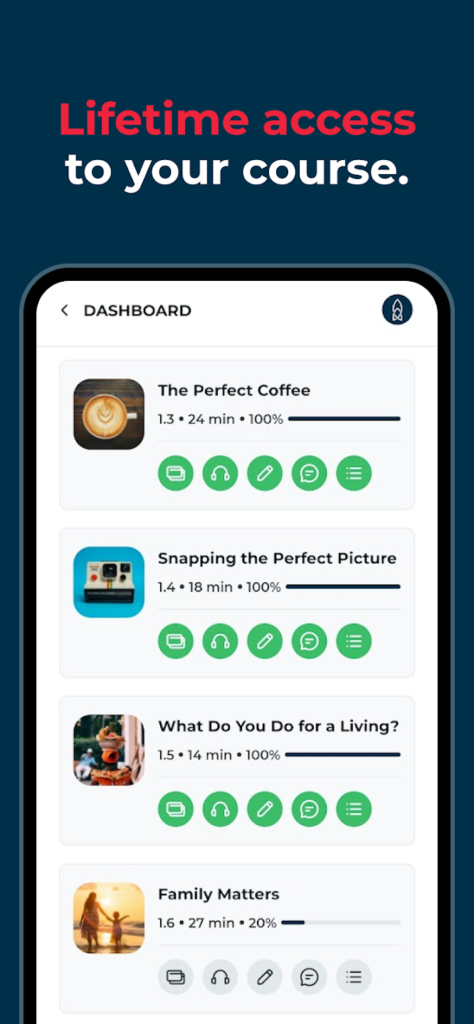
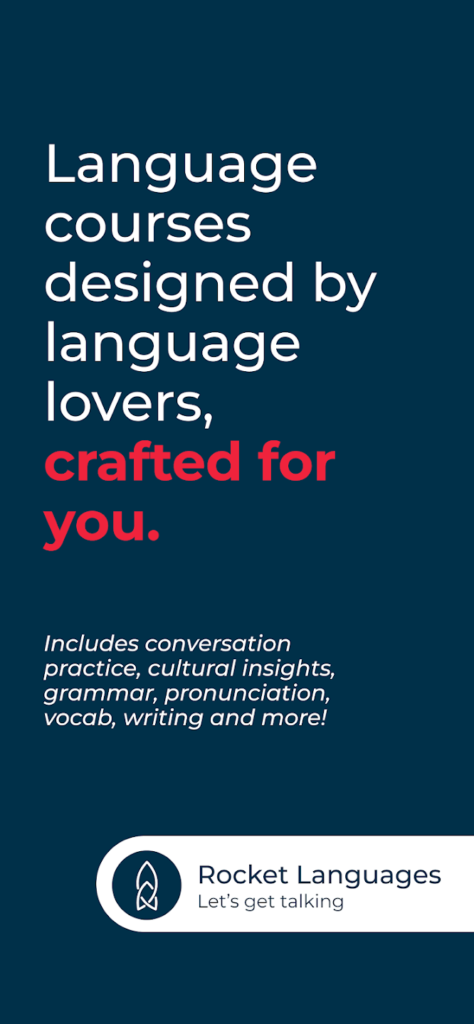
Key Highlights:
- Lifetime access with free updates
- Smart review system based on your weak points
- Native-speaker audio and speech recognition
Who it’s best for:
- Learners who want a structured, long-term tool
- People who value cultural context and immersion
- Anyone looking for lifetime access without a subscription
Contact Information:
- Website: www.rocketlanguages.com
- App store: apps.apple.com/us/app/rocket-languages
- Google Play: play.google.com/store/apps/details

2. Pimsleur
Pimsleur Italian is a premium audio-based program grounded in over 50 years of linguistic research. It focuses on listening and speaking from day one, using graduated interval recall and conversational practice. This method is ideal for busy learners who prefer hands-free learning during commutes or walks. The lessons help you gradually build fluency and a near-native accent without overwhelming grammar or reading requirements.
Unlike visual-heavy apps, Pimsleur emphasizes real-world usage through audio immersion, making it perfect for auditory learners. You’ll engage in simulated conversations, respond to native speakers, and start thinking in Italian rather than translating word-for-word. With courses divided by levels and a flexible app interface, you can tailor your learning to your pace and lifestyle.
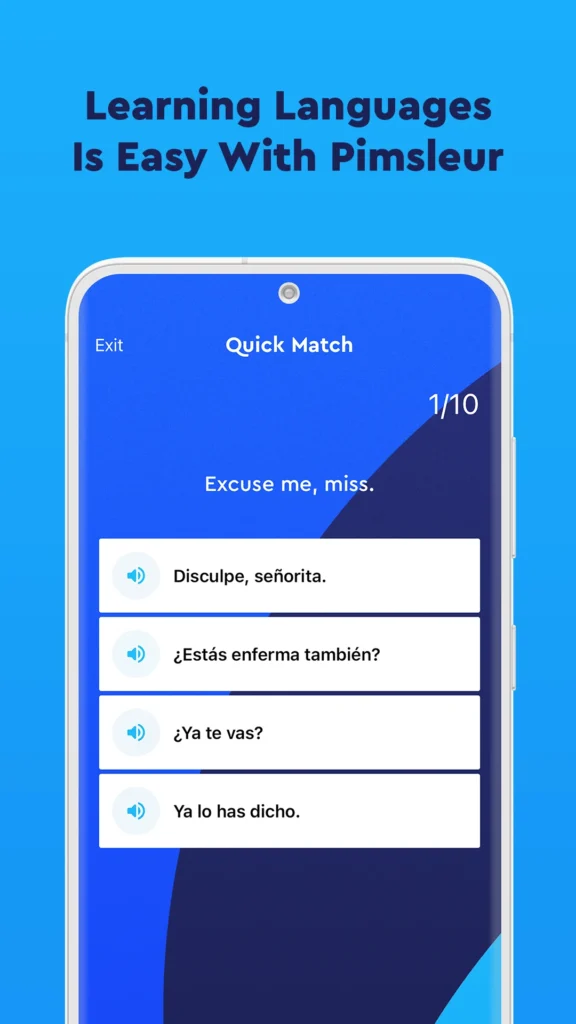
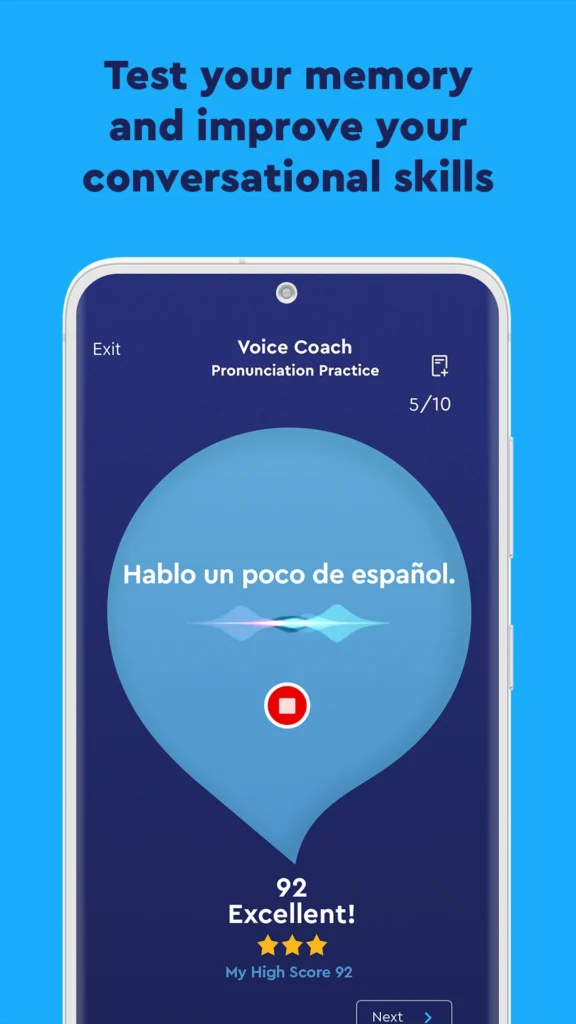
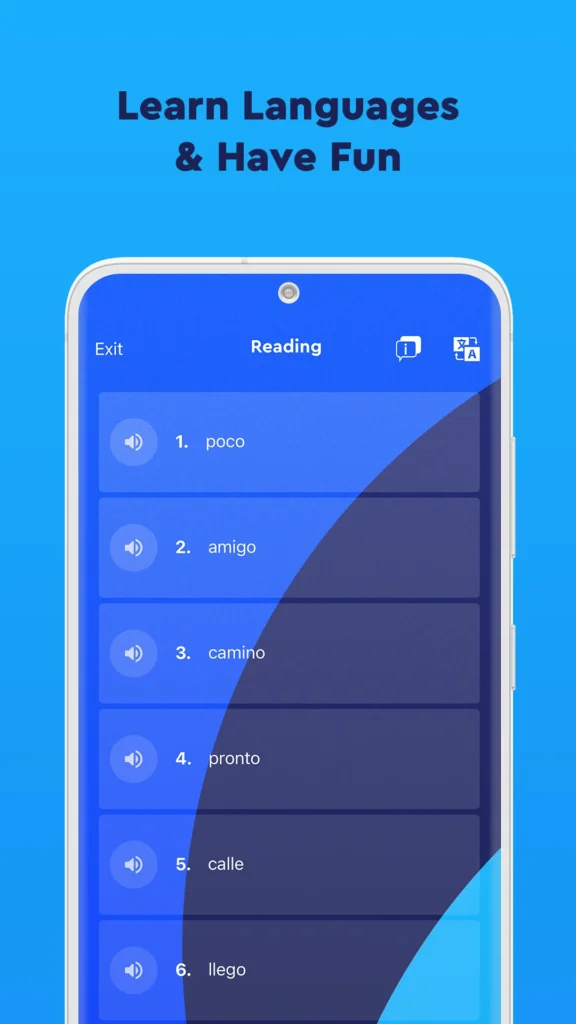
Key Highlights:
- Proven audio method that builds speaking confidence
- Portable lessons perfect for on-the-go learning
- Simple interface with clear lesson progression
Who it’s best for:
- Commuters and multitaskers
- Learners focused on speaking and listening
- People who prefer structured audio lessons over visual apps
Contact Information:
- Website: www.pimsleur.com
- App store: apps.apple.com/us/app/pimsleur-language-learning
- Google Play: play.google.com/store/apps/details
- Facebook: www.facebook.com/Pimsleur-Language-Programs
- Twitter: x.com/pimsleur
- Instagram: www.instagram.com/pimsleur
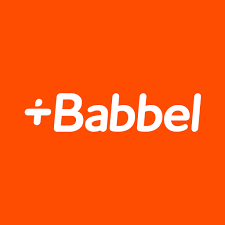
3. Babbel
Babbel is a flexible and intuitive app for learning Italian, offering lessons that blend vocabulary, grammar, and cultural insights. It’s known for its short, practical lessons that can be completed in under 10 minutes – ideal for busy learners. Babbel personalizes your learning experience with placement tests and progress tracking. You’ll start speaking from the first lesson and reinforce grammar through real-life dialogues and pronunciation exercises with native speaker audio.
One unique strength of Babbel is its blend of learning methods. In addition to the app, you can access live classes, podcasts, and reading materials to deepen your skills. Grammar is clearly explained, and the app teaches Italian in context, making lessons more memorable. Whether you’re prepping for a trip to Italy or advancing your career, Babbel is both fun and effective.
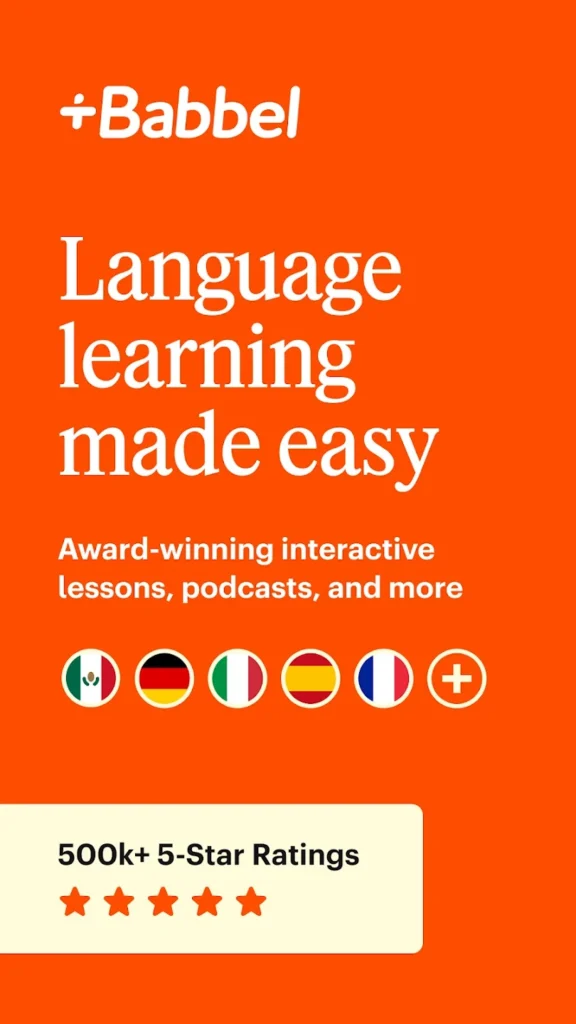
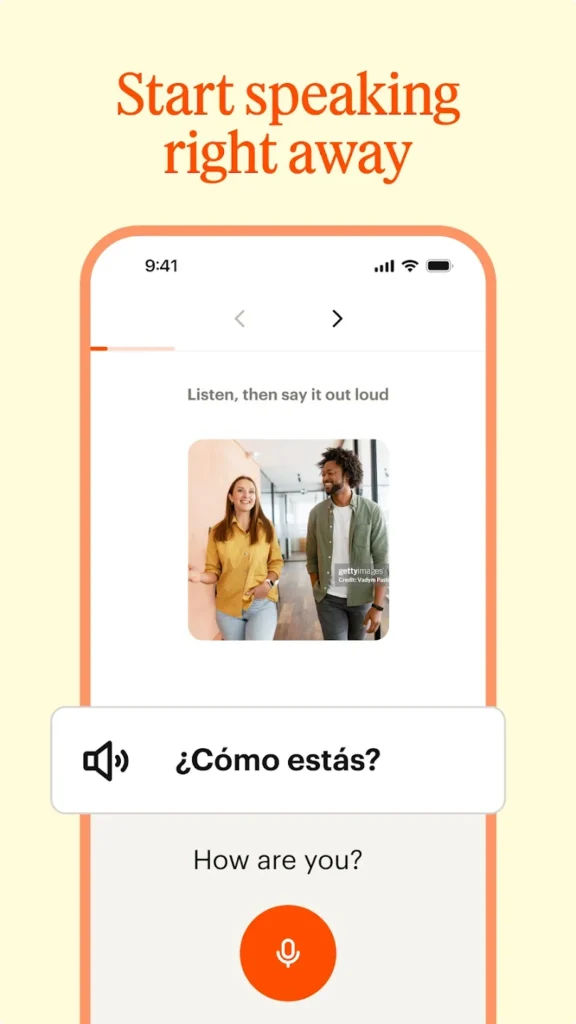
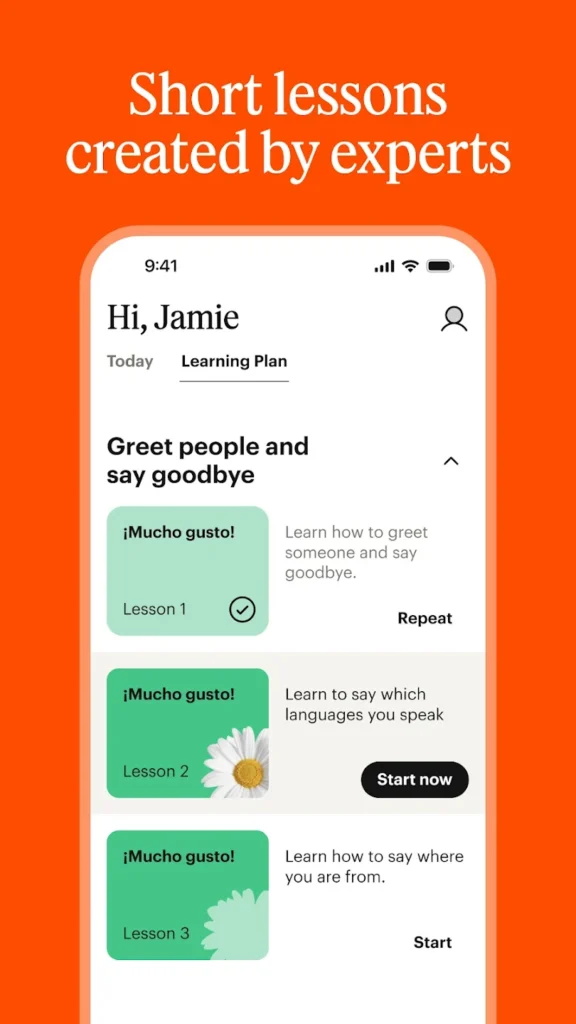
Key Highlights:
- Short, daily lessons that fit any schedule
- Speech recognition for pronunciation feedback
- Cultural insights and real-world conversation topics
Who it’s best for:
- Beginners who want fast, structured progress
- Learners seeking a balance of grammar and speaking
- Professionals and travelers preparing for real-world use
Contact Information:
- Website: www.babbel.com
- App store: apps.apple.com/us/app/babbel-language-learning
- Google Play: play.google.com/store/apps/details
- Facebook: www.facebook.com/babbel.languages
- Instagram: www.instagram.com/babbel
- LinkedIn: www.linkedin.com/company/babbel-com

4. Rosetta Stone
Rosetta Stone has helped millions learn languages through its immersive, image-based approach. The Italian course focuses on developing intuition rather than memorization. Using Dynamic Immersion, learners absorb vocabulary and grammar through context, visuals, and pronunciation exercises powered by TruAccent speech recognition. The experience mimics how children learn their first language no translations, just meaningful input.
Lessons are designed for real-life communication, starting with simple phrases and gradually building to complex conversation. With access to Stories, Phrasebooks, and bite-sized sessions, Rosetta Stone supports a variety of learning preferences. The app is available across devices, letting you study anytime, anywhere.
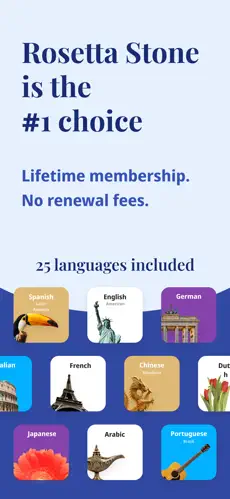
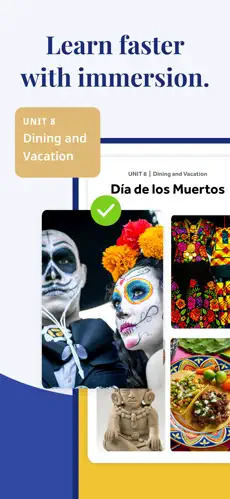
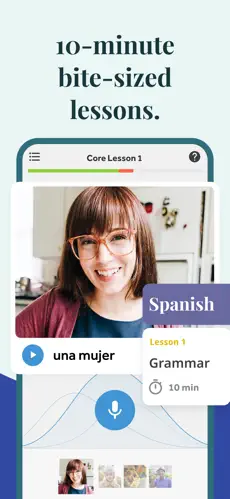
Key Highlights:
- TruAccent technology to refine pronunciation
- Visual immersion without English translations
- Lifetime access with multi-device support
Who it’s best for:
- Visual learners who benefit from contextual learning
- Travelers wanting survival phrases quickly
- Long-term learners seeking a polished accent
Contact Information:
- Website: www.rosettastone.com
- App store: apps.apple.com/us/app/rosetta-stone-learn-languages
- Google Play: play.google.com/store/apps/details
- Instagram: www.instagram.com/rosettastone
- Twitter: x.com/rosettastone
- Facebook: www.facebook.com/RosettaStone

5. OUINO
OUINO Italian offers one of the most comprehensive and customizable learning systems available today. Designed for serious learners, it features over 450 lessons and 1,300 exercises across five integrated modules: Verbs & Conjugation, Building Blocks, Conversations, Pronunciation, and Vocabulary. Unlike linear apps, OUINO gives you the freedom to follow your own learning path and adjust lesson speed to fit your style.
The platform combines visual, audio, and written elements to develop all four language skills speaking, reading, writing, and listening. Lessons are clear, grammar is explained in English, and pronunciation is practiced alongside native recordings. Whether you’re just starting out or need structured review, OUINO is flexible and deep enough to support full fluency.
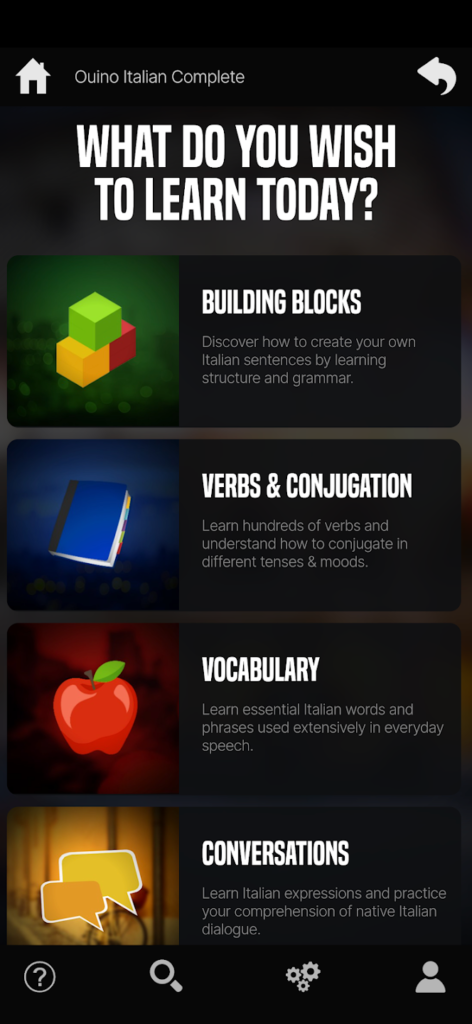
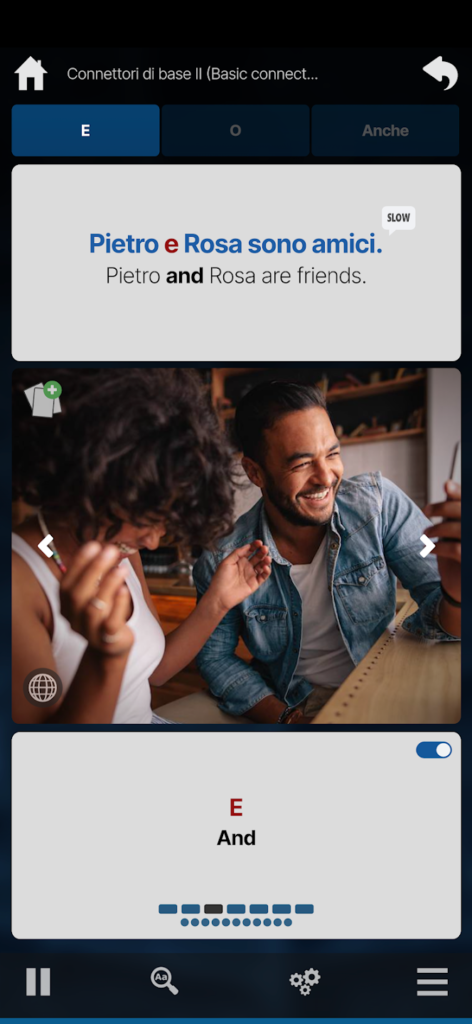
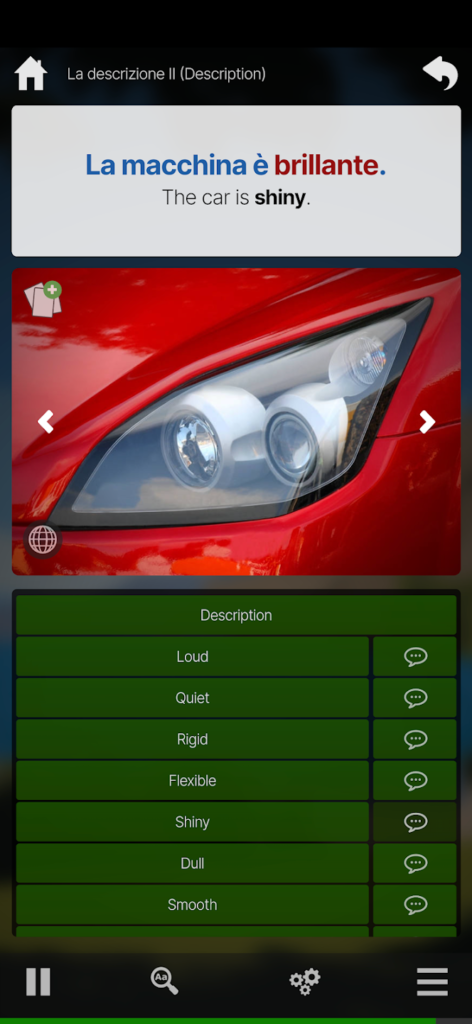
Key Highlights:
- Customizable pace and learning path
- 5 detailed modules covering every skill
- One-time payment with lifetime access
Who it’s best for:
- Independent learners who want full control
- Visual and audio learners seeking depth
- Those serious about long-term fluency
Contact Information:
- App store: apps.apple.com/us/app/ouino-italian-members-only
- Google Play: play.google.com/store/apps/details
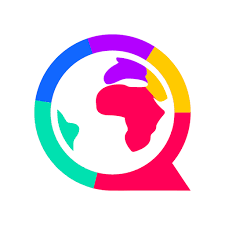
6. FluentU
FluentU transforms Italian learning into an immersive, cultural experience by using authentic video content like movie scenes, TV shows, and music videos. Each clip comes with interactive subtitles, pop-up translations, and context-specific vocabulary. Learners can click on any word to view its definition, hear pronunciation, and see it used in example sentences. This creates a dynamic, engaging environment where language acquisition happens naturally through real media exposure.
FluentU also includes personalized quizzes, flashcards, and spaced repetition to reinforce learning. The platform caters to all proficiency levels, offering a vast library of curated videos to help learners understand both standard Italian and regional nuances. Whether you’re studying casually or seriously, FluentU blends entertainment with education in a way that traditional apps often miss.
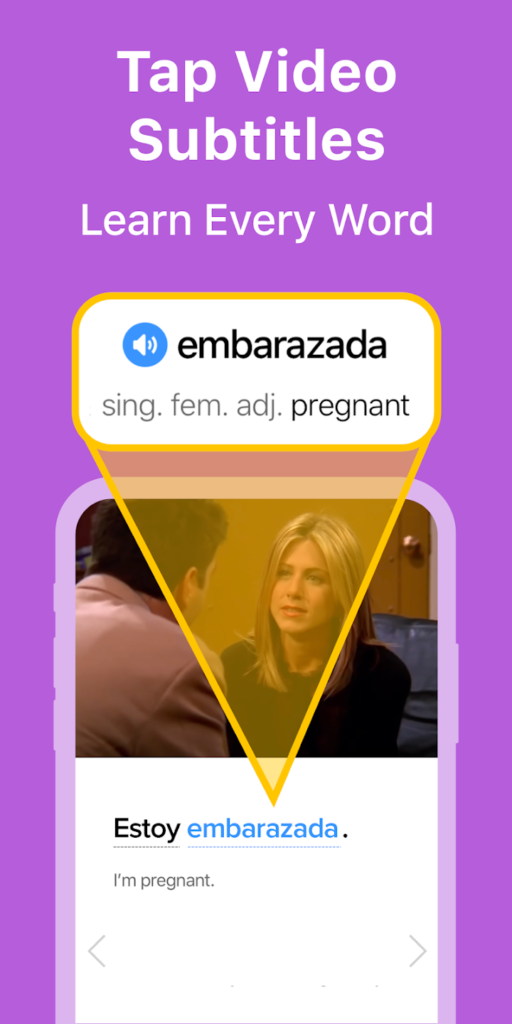
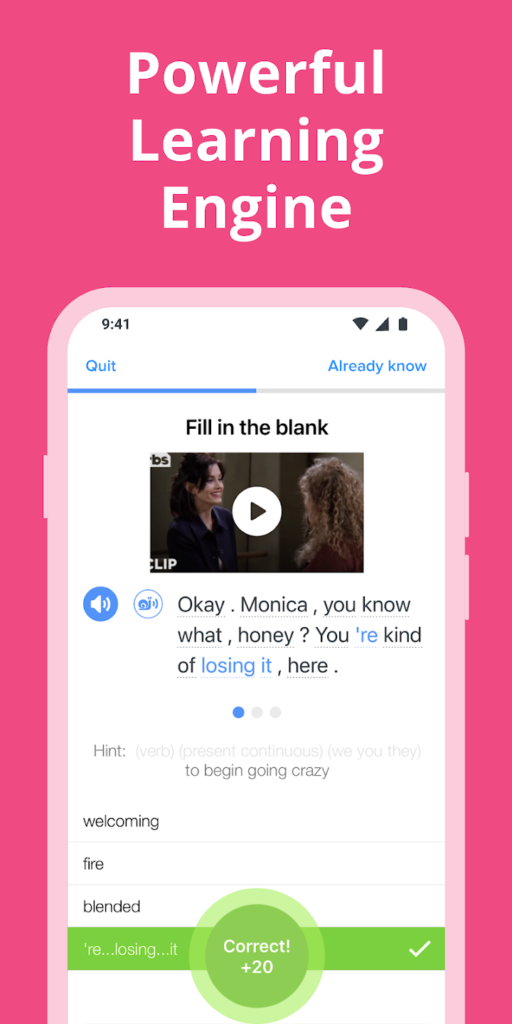
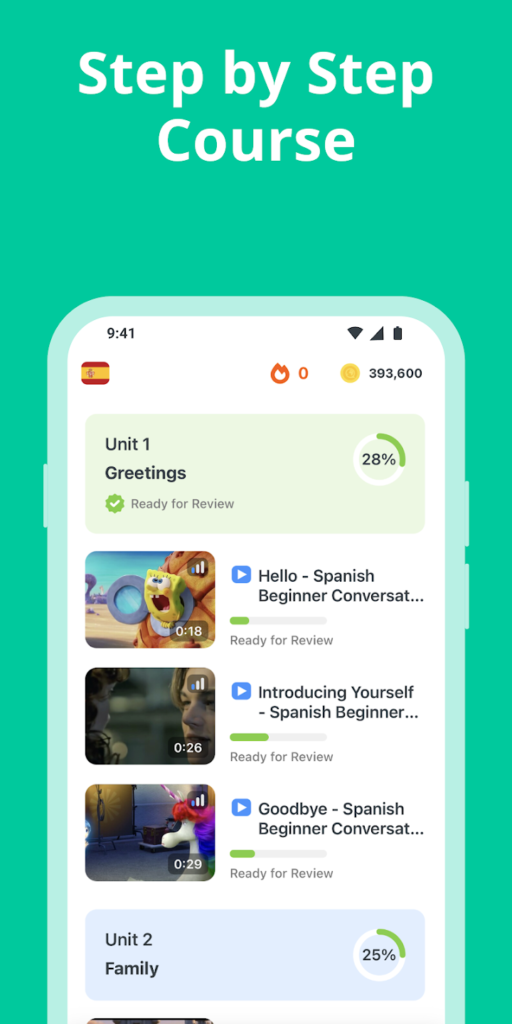
Key Highlights:
- Authentic videos with smart interactive subtitles
- Contextual vocabulary learning with examples and slang
- Adaptive quizzes with spaced repetition
Who it’s best for:
- Visual and auditory learners
- Fans of movies, music, and pop culture
- Learners seeking immersion without traveling
Contact Information:
- Website: www.fluentu.com
- App store: apps.apple.com/us/app/fluentu-learn-language-videos
- Google Play: play.google.com/store/apps/details
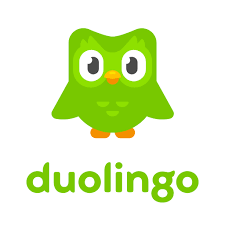
7. Duolingo
Duolingo offers a fun, gamified way to learn Italian in just five minutes a day. With its bite-sized lessons and interactive challenges, Duolingo helps learners build vocabulary, grammar, and pronunciation skills through repetition and reward. The app turns language learning into a game complete with points, streaks, and leaderboards which makes it highly motivating and easy to stick with.
Powered by AI and linguistic science, Duolingo adapts to your level, offering personalized lessons that grow with you. Its mascot, Duo the owl, provides reminders and encouragement to keep you on track. Though best suited for beginners and casual learners, Duolingo also includes listening and speaking exercises for a well-rounded foundation in Italian.
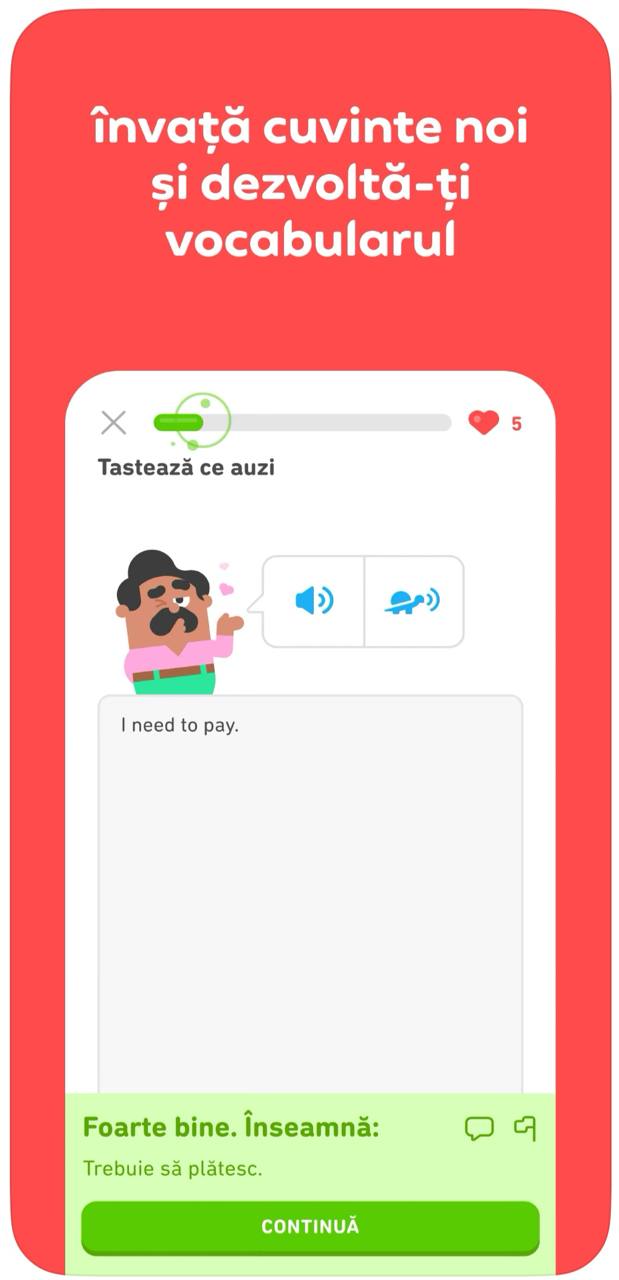

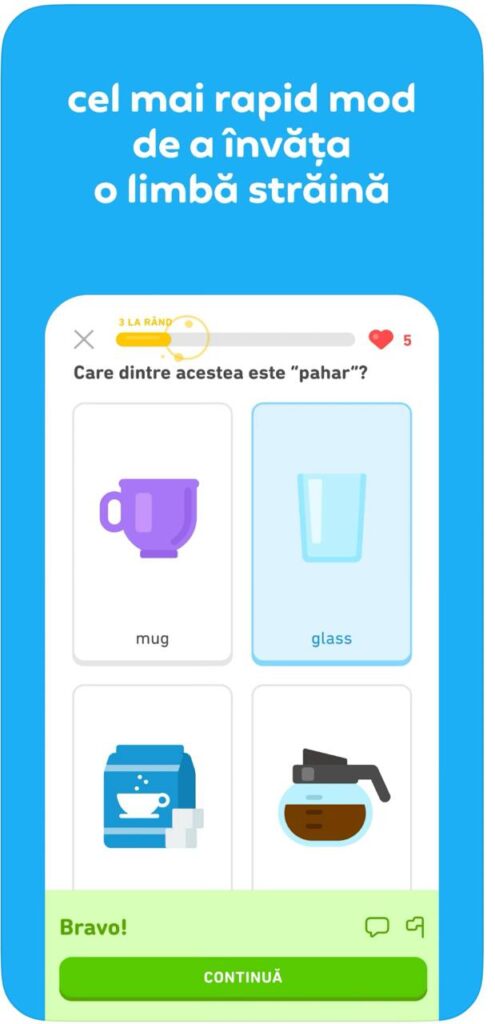
Key Highlights:
- Free, gamified learning experience
- Personalized progression using AI
- Quick lessons that build a daily habit
Who it’s best for:
- Beginners and casual learners
- Fans of gamification and friendly competition
- People with limited time for daily practice
Contact Information:
- Website: www.duolingo.com
- App store: apps.apple.com/app/duolingo-language-lessons
- Google Play: play.google.com/store/apps/details
- Facebook: www.facebook.com/duolingo
- Instagram: www.instagram.com/duolingo
- Twitter: x.com/duolingo
- LinkedIn: www.linkedin.com/company/duolingo

8. Memrise
Memrise uses AI and real-world videos to help you speak Italian like a local. The app focuses on vocabulary acquisition through personalized lessons based on your interests. It also offers unlimited, human-like conversation practice powered by GPT technology, which helps learners build fluency and confidence in speaking.
Each word you learn is reinforced through short videos of native speakers using that word naturally. This approach combines listening comprehension with visual learning and spaced repetition. Memrise also offers custom review plans that adapt to your progress and memory retention, making it highly effective for learners at any level.
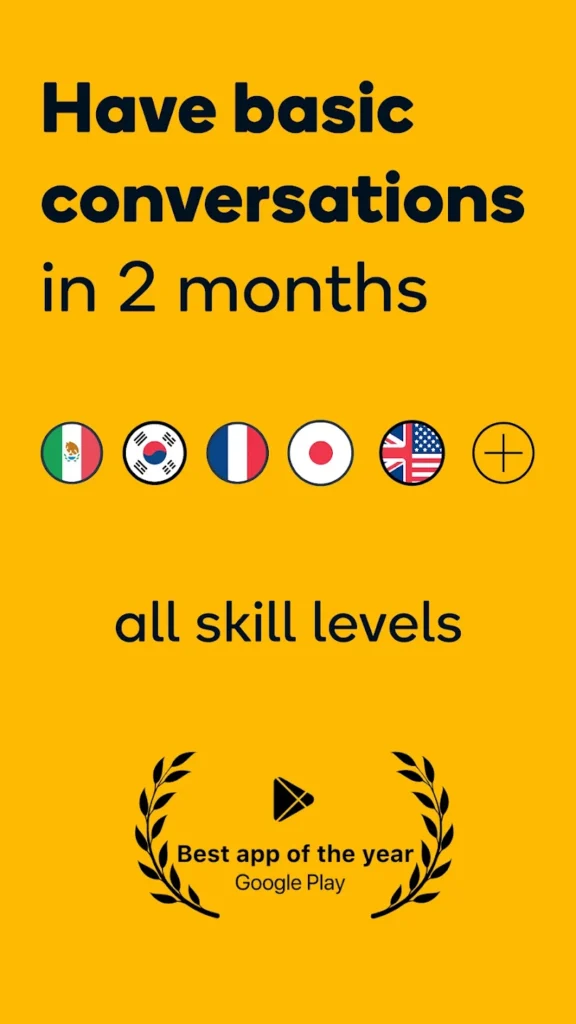
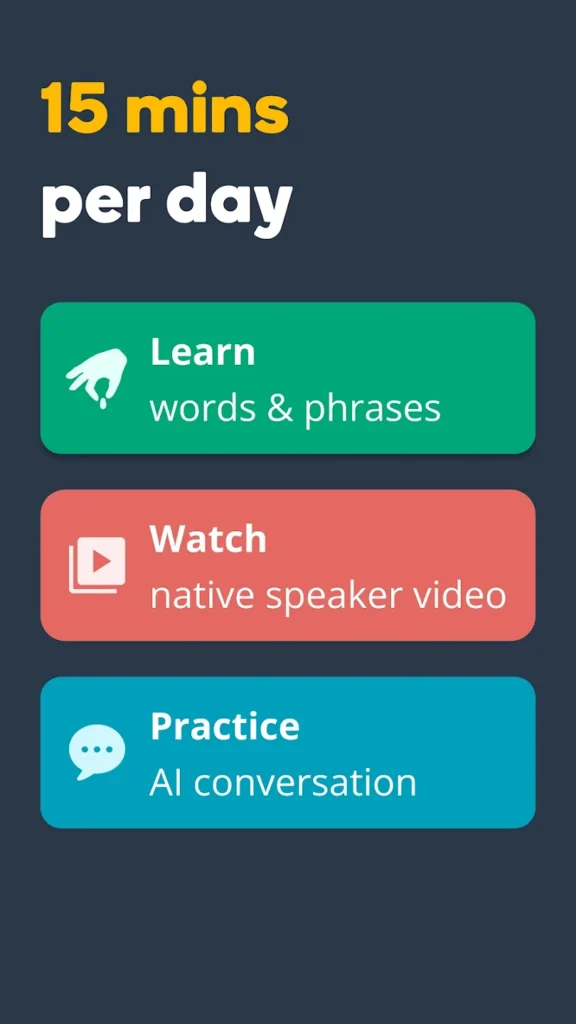
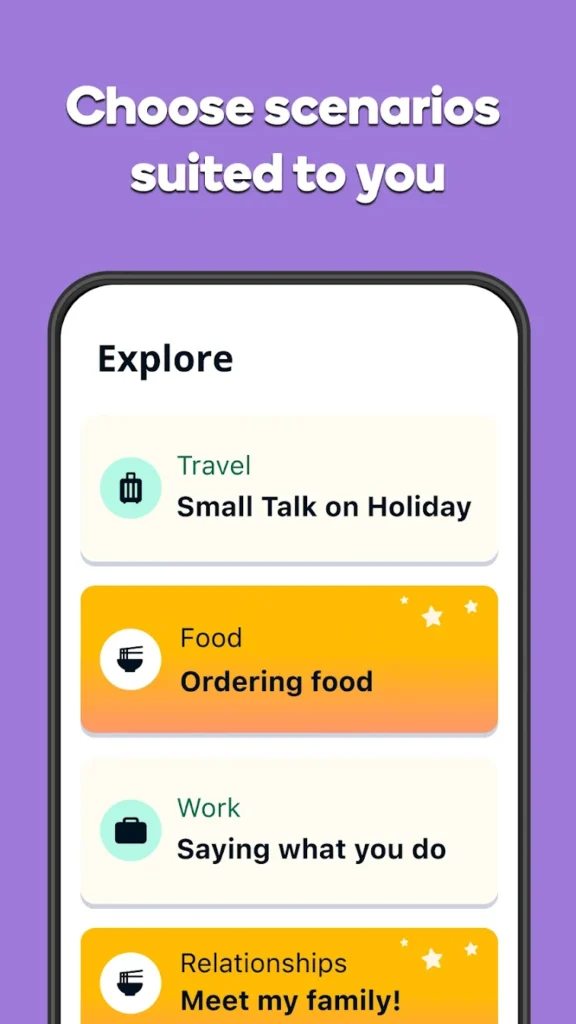
Key Highlights:
- Real-life video clips with native speakers
- Personalized AI-powered speaking practice
- Adaptive review system based on memory science
Who it’s best for:
- Learners who want to sound natural and local
- Fans of video and immersive content
- Intermediate users aiming to boost fluency
Contact Information:
- Website: www.memrise.com
- App store: apps.apple.com/us/app/memrise-easy-language-learning
- Google Play: play.google.com/store/apps/details
- Facebook: www.facebook.com/memrise
- Twitter: x.com/memrise
- Instagram: www.instagram.com/memrise
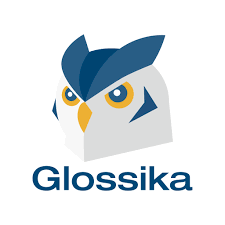
9. Glossika
Glossika takes a sentence-based approach to Italian learning, helping you absorb grammar and vocabulary naturally through full phrases. The app provides thousands of audio sentences spoken by native speakers, gradually increasing in difficulty. This method trains your ear, improves pronunciation, and helps you internalize Italian structure over time.
Glossika offers personalized repetition schedules and progress tracking. Its emphasis on listening and speaking makes it ideal for developing conversational fluency. Whether you’re a beginner or advanced learner, the spaced repetition of real-life sentences ensures your skills grow steadily and stick long term.
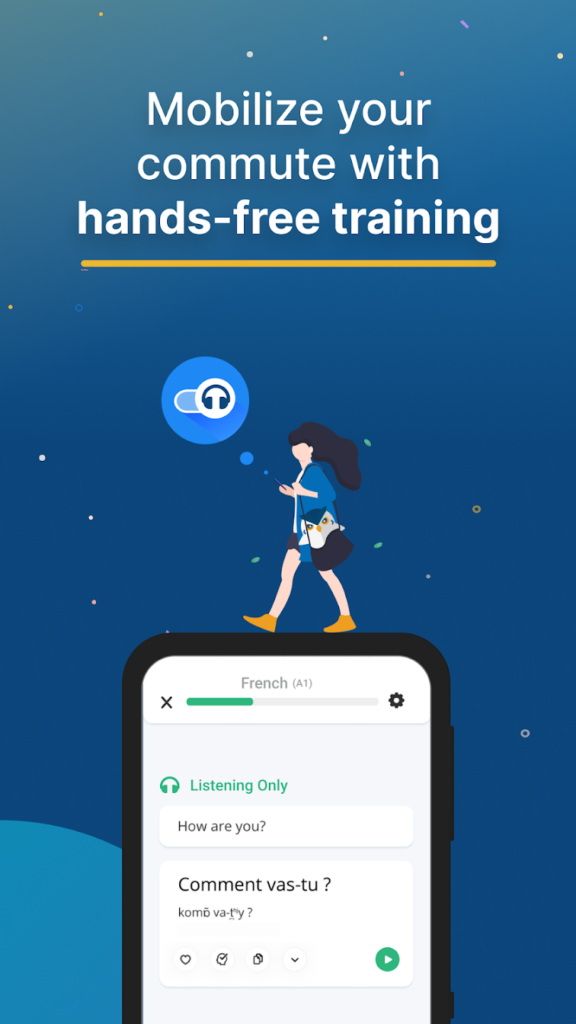
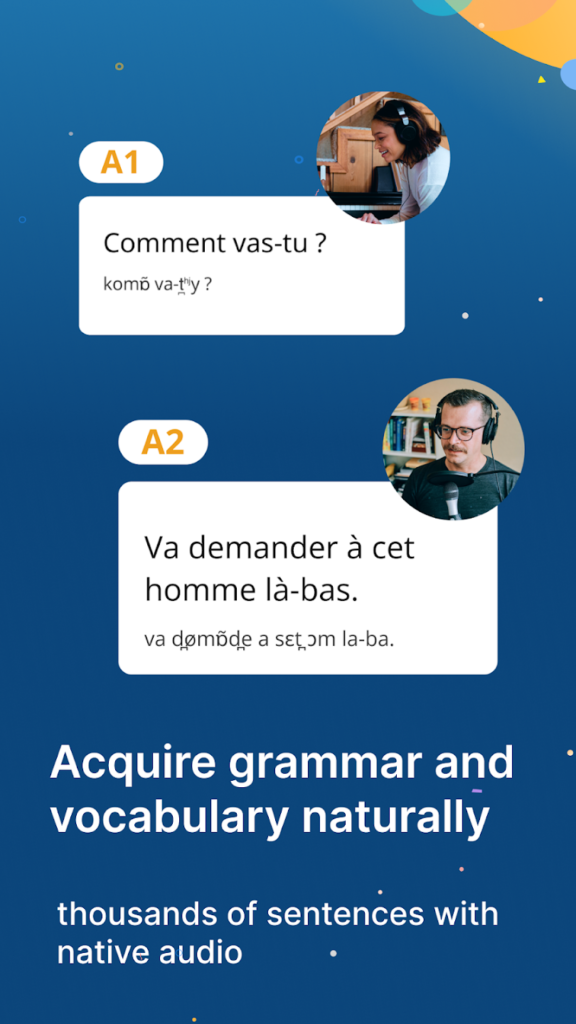
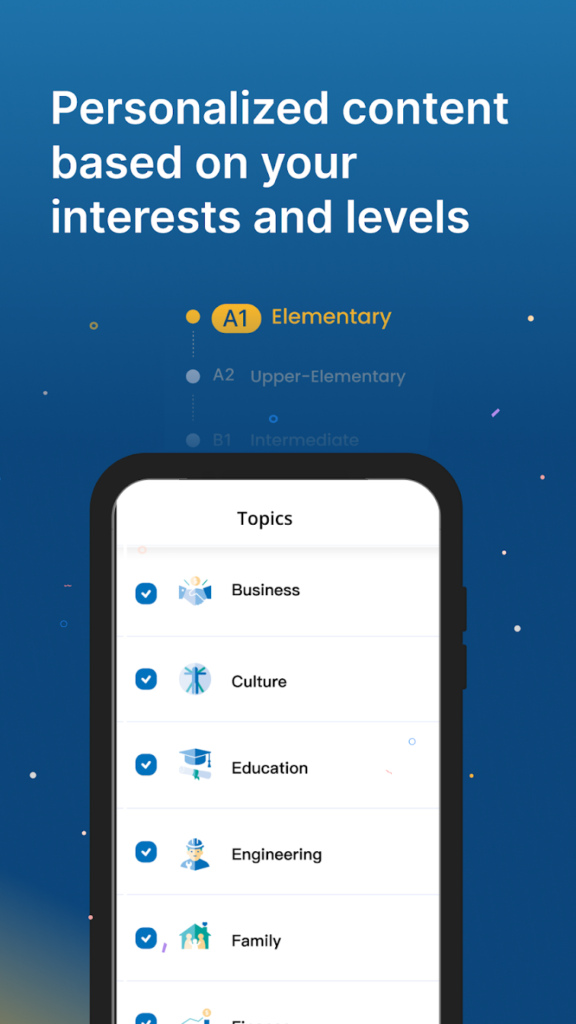
Key Highlights:
- Thousands of native-spoken sentences
- Sentence-based learning with built-in grammar
- Automatic spaced repetition for long-term retention
Who it’s best for:
- Learners focused on fluency through repetition
- People who want to avoid isolated vocab and grammar drills
- Audio-based learners with limited time
Contact Information:
- App store: apps.apple.com/us/app/glossika-language-learning
- Google Play: play.google.com/store/apps/details

10. Mondly
Mondly combines bite-sized daily lessons with speech recognition and real-life conversations to help learners become fluent in Italian quickly and efficiently. The app features interactive exercises covering reading, writing, listening, and speaking, all wrapped in a colorful and intuitive interface. It adapts to your progress and offers personalized feedback to strengthen weak areas.
The app also includes chatbot-based conversations and virtual reality (VR) simulations for immersive practice. With support for over 40 languages, Mondly allows you to learn Italian from your native language. Its modules cover useful topics like travel, business, and everyday communication, making it both practical and engaging.
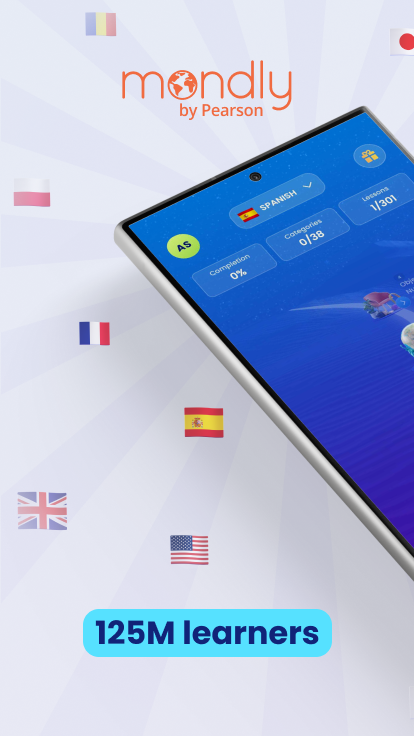
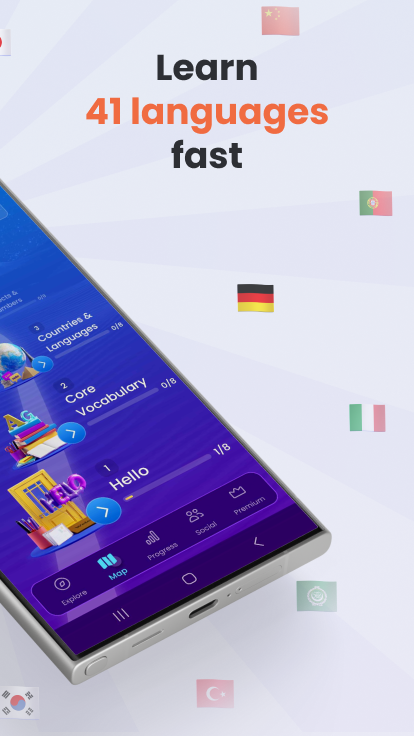
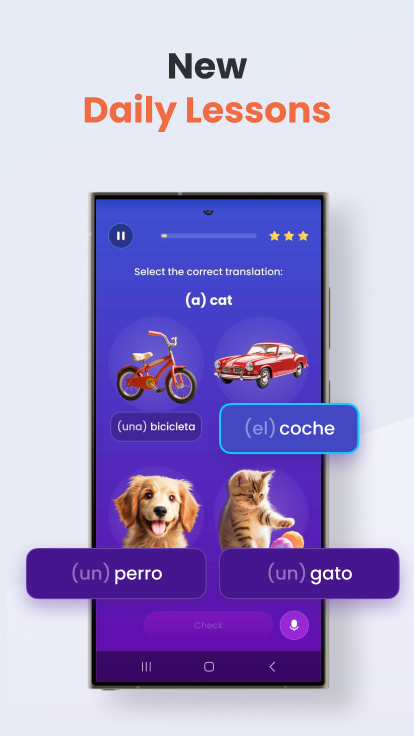
Key Highlights:
- Voice recognition and chatbot conversations
- VR experiences for deeper immersion
- Daily lessons with clear progress tracking
Who it’s best for:
- Learners looking for daily structure and motivation
- Travelers or professionals needing topic-based lessons
- Fans of interactive and tech-driven learning tools
Contact Information:
- Website: www.mondly.com
- App store: apps.apple.com/us/app/mondly-learn-41-languages
- Google Play: play.google.com/store/apps/details
- Facebook: www.facebook.com/mondlylanguages
- Twitter: x.com/mondlylanguages
- Instagram: www.instagram.com/mondlylanguages
- LinkedIn: www.linkedin.com/company/mondly

11. ItalianPod101
ItalianPod101 is a flexible learning platform that delivers thousands of audio and video lessons tailored to your goals whether you’re learning for travel, work, or romance. Lessons are designed around real-life dialogues, and each one includes slowed-down audio and word-by-word breakdowns so you can understand every phrase clearly. Native-speaking instructors guide you step by step, ensuring strong comprehension from the start.
To support rapid learning, ItalianPod101 includes a wide variety of study tools like flashcards, word lists, and line-by-line transcripts. For more in-depth support, premium users can work 1-on-1 with a personal tutor who provides custom feedback, personalized lesson plans, and messaging support. This makes it not only convenient but highly personalized and responsive to your needs.
Key Highlights:
- Thousands of real-life dialogue lessons
- Slowed-down audio and detailed breakdowns
- Personalized tutoring with Premium PLUS
Who it’s best for:
- Learners who want flexibility in topic and pace
- Audio-focused learners who value real conversation
- Students seeking personal guidance and structure
Contact Information:
- Website: www.italianpod101.com
- App store: apps.apple.com/us/learn-italian-italianpod101

12. Busuu
Busuu blends expert-crafted courses with an international community of native speakers for a highly interactive learning experience. The app provides compact lessons covering speaking, listening, reading, and writing, making it ideal for learners with busy schedules. Each lesson is goal-oriented, and learners can receive feedback directly from native speakers via the community.
Busuu also includes AI-powered features that tailor lessons to your strengths and weaknesses, while its speech recognition tool offers real-time pronunciation correction. It even has offline learning capabilities and professional certificates through McGraw-Hill Education, adding credibility to your progress.
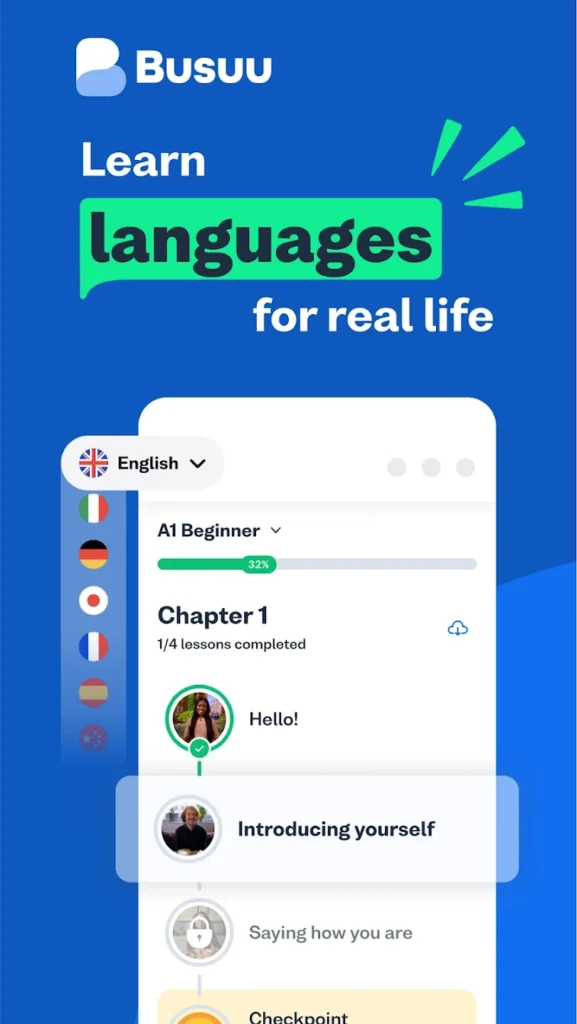
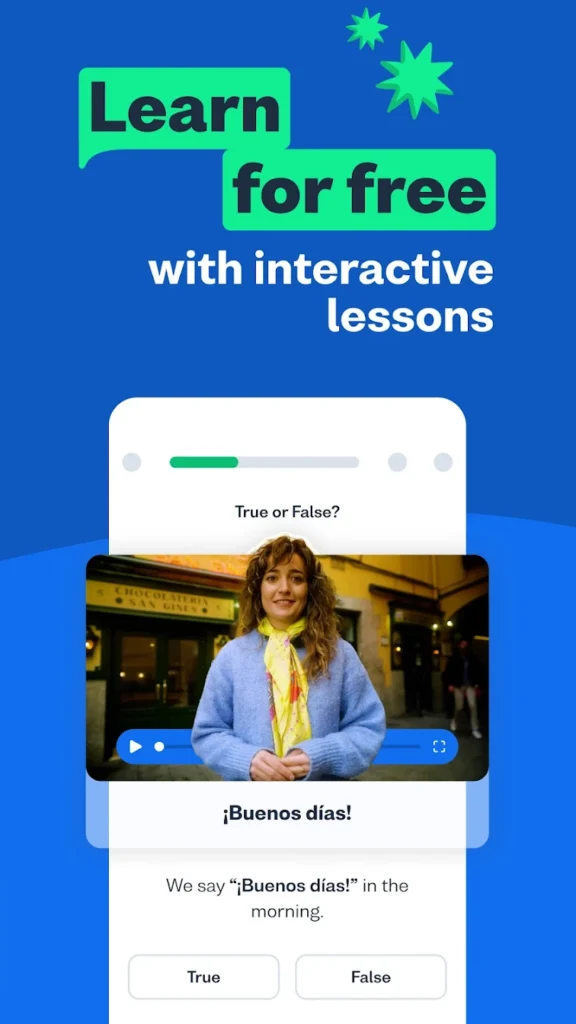
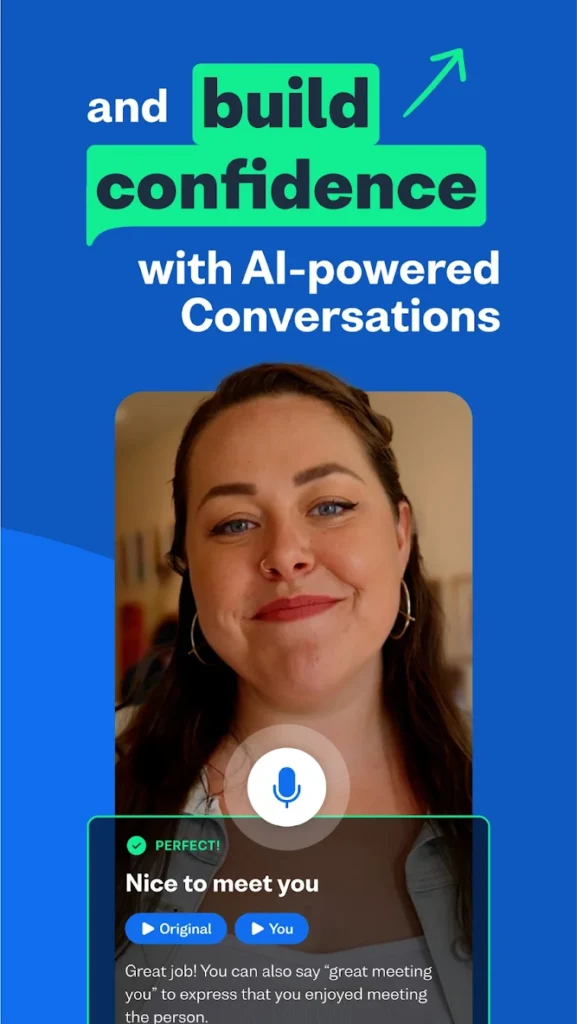
Key Highlights:
- Feedback from native speakers in real time
- Goal-based lessons with certificates
- Personalized learning plans and assessments
Who it’s best for:
- Learners who want expert content and peer feedback
- Those preparing for travel or work-related communication
- Students looking to earn certification for their skills
Contact Information:
- App store: apps.apple.com/us/app/busuu-language-learning
- Google Play: play.google.com/store/apps/details

13. Lingvist
Lingvist is a minimalist, AI-driven app designed for fast vocabulary acquisition. It adapts in real time to your current knowledge and focuses only on the words and grammar you truly need. The app avoids distractions and gamification, offering a clean interface and a laser-focused learning experience. It’s perfect for learners who are short on time but want to make measurable progress.
The app uses spaced repetition and personalized feedback to strengthen memory retention. Lessons evolve based on your performance, and speech recognition helps you perfect pronunciation. Whether you’re starting from scratch or want to boost your vocabulary quickly, Lingvist delivers results efficiently.
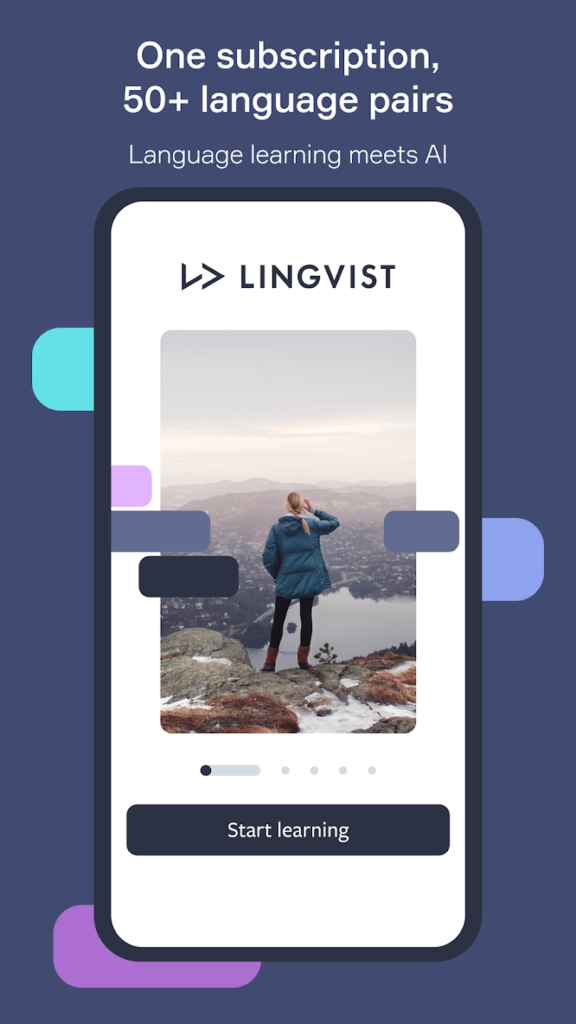
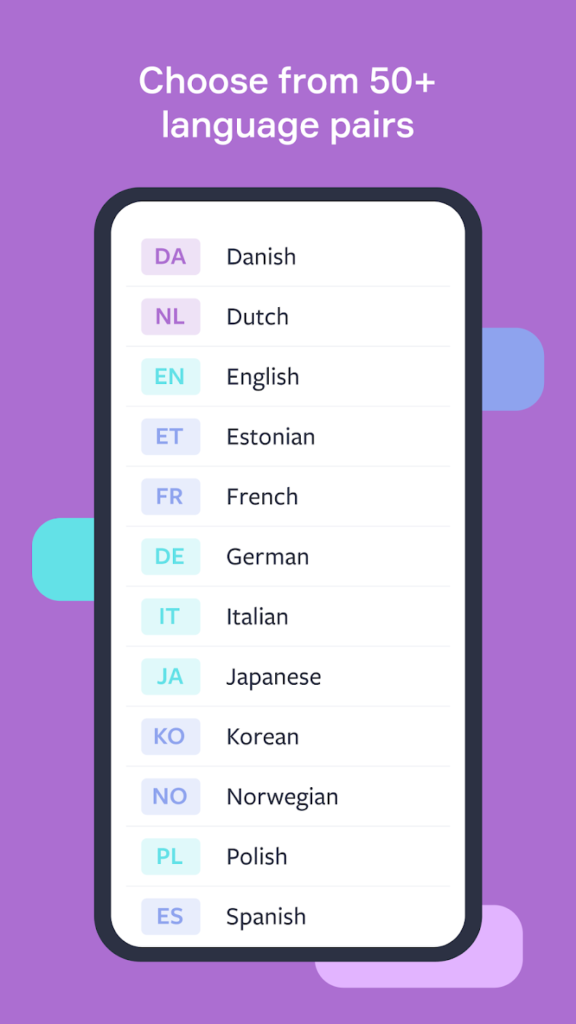
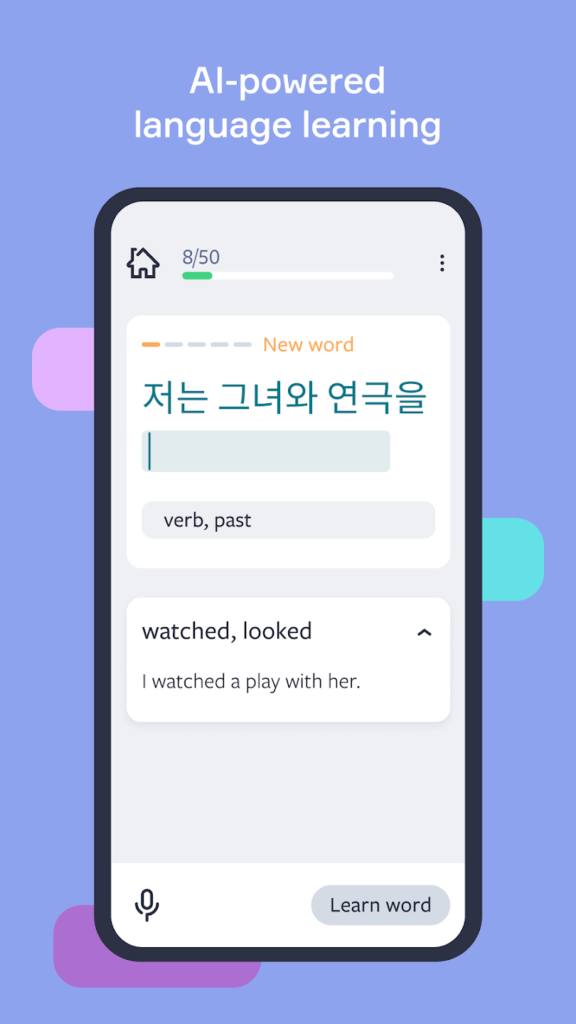
Key Highlights:
- Fast, focused vocabulary building
- AI-driven personalization and pacing
- Voice input and pronunciation practice
Who it’s best for:
- Learners who want to maximize time efficiency
- People who already know basic grammar and need vocabulary
- Users who prefer clean design and minimal distractions
Contact Information:
- Website: lingvist.com
- App store: apps.apple.com/us/app/lingvist-learn-languages-fast
- Google Play: play.google.com/store/apps/details
- Facebook: www.facebook.com/TheLingvist
- Twitter: x.com/lingvist
- Instagram: www.instagram.com/thelingvist
- LinkedIn: www.linkedin.com/company/lingvist

14. HelloTalk
HelloTalk is a language exchange app that connects learners with native Italian speakers around the world. Instead of structured lessons, it provides a social environment for organic language practice. You can chat via text, voice, or video, while using built-in tools like translations, pronunciation guides, and correction suggestions to support your learning in real time.
The app also includes “Moments,” a feature where users can post questions or updates to the broader community. This fosters cultural exchange and casual conversation, making it a great supplement to more traditional study methods. It’s learning by doing, directly with real people.
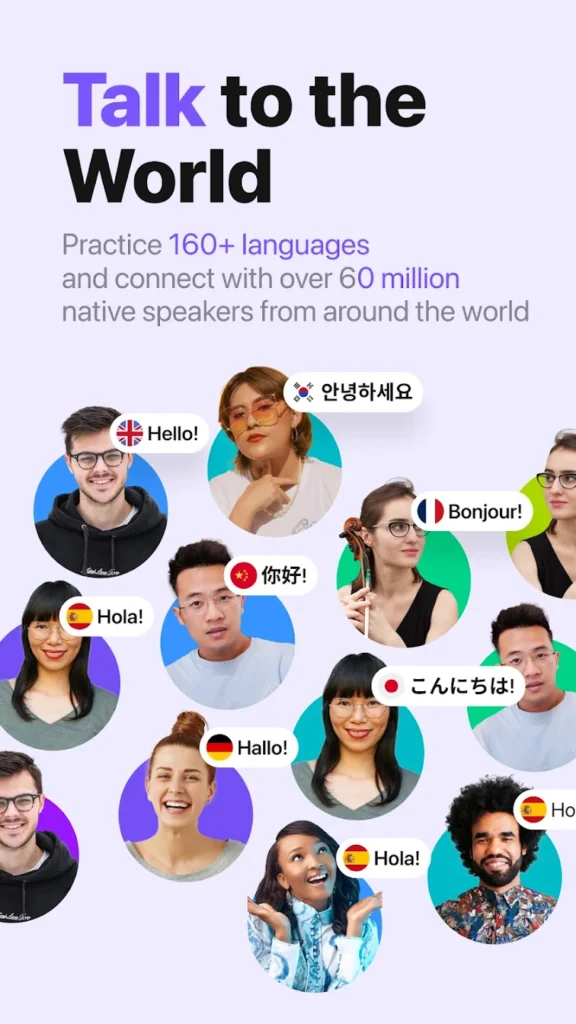
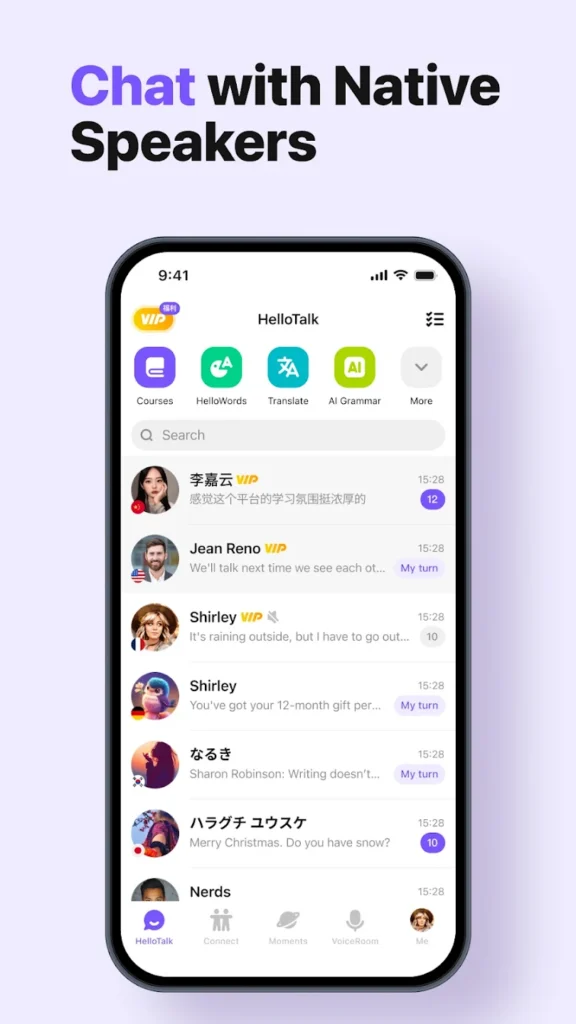
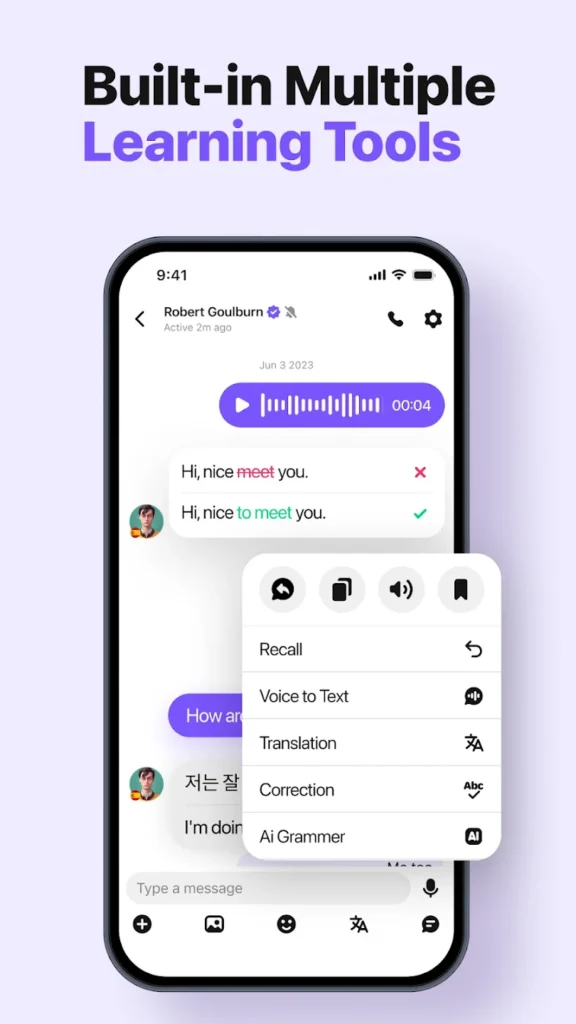
Key Highlights:
- Direct chat with native speakers
- Real-time corrections and translations
- Audio, video, and social sharing features
Who it’s best for:
- Learners looking to practice speaking with real people
- Fans of social and interactive learning
- Intermediate users seeking natural conversation
Contact Information:
- App store: apps.apple.com/us/app/hellotalk-language-learning
- Google Play: play.google.com/store/apps/details
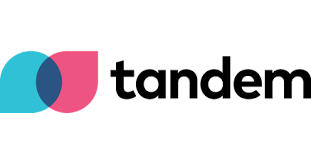
15. Tandem
Tandem is a powerful language exchange app that matches you with Italian speakers looking to learn your native language. You can chat via text, voice, or video, and the app offers built-in correction tools and translation support. Unlike some casual language exchange platforms, Tandem’s partner-matching system helps ensure relevant, serious connections.
The app offers language coaching with certified tutors for those who want more structure, but its core strength lies in real conversation. You’ll build fluency through live exchanges while getting cultural insight and real-world practice from your partners.
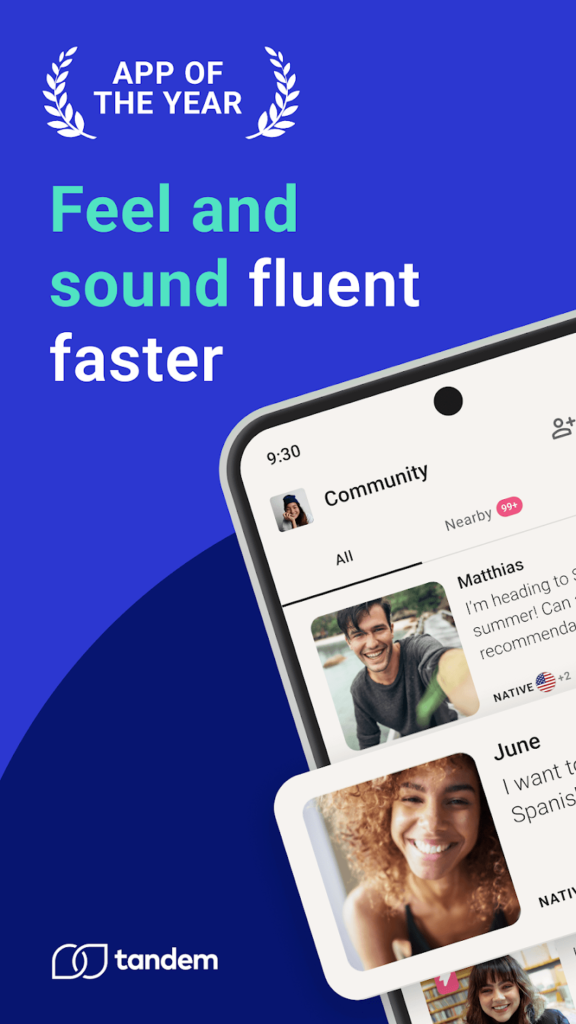
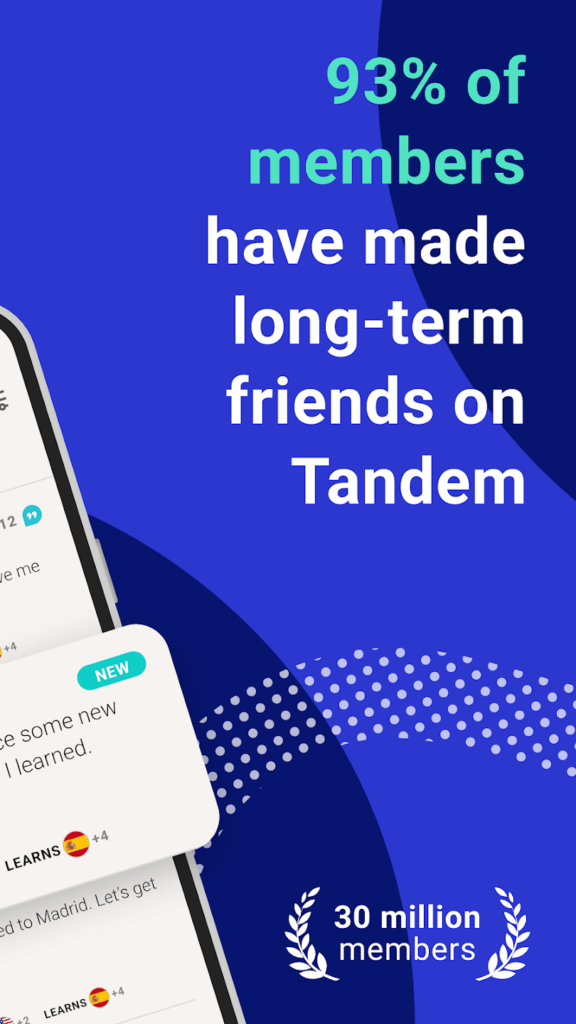
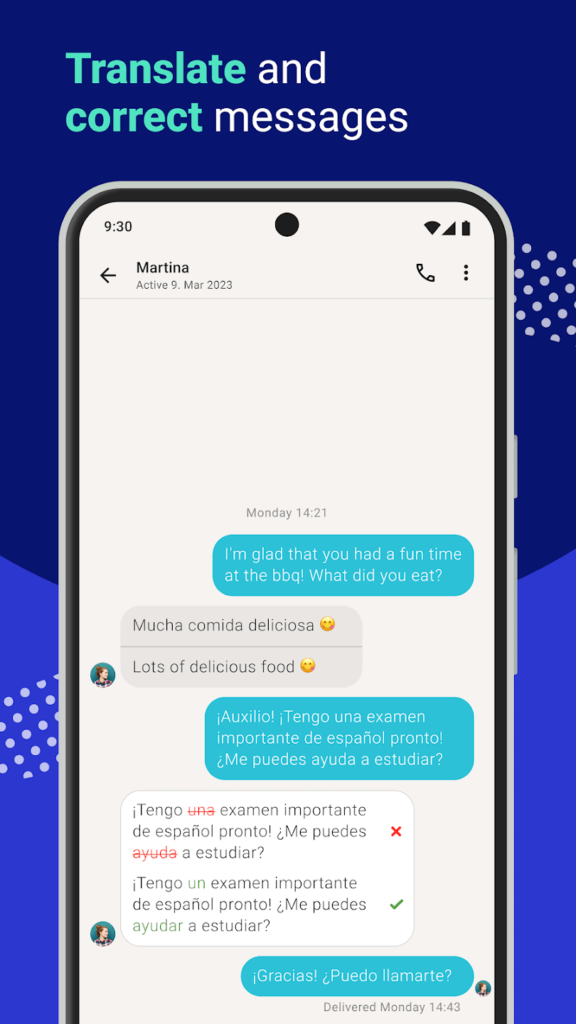
Key Highlights:
- Partner-matching for focused exchanges
- Voice and video calling with in-app translation
- Option to book lessons with professional tutors
Who it’s best for:
- Learners who thrive through conversation
- Users looking to make language exchange friends
- People seeking both free practice and paid tutoring
Contact Information:
- Website: tandem.net
- App store: apps.apple.com/us/app/tandem-conversation-exchange
- Google Play: play.google.com/store/apps/details
- Instagram: www.instagram.com/TandemAppHQ
- Facebook: www.facebook.com/tandemlanguageapp
- Twitter: x.com/TandemAppHQ
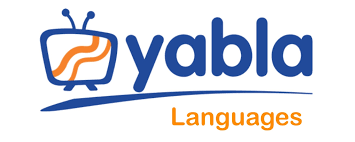
16. Yabla
Yabla Italian helps learners become fluent through an extensive library of over 4,100 authentic videos featuring native speakers. From beginner to advanced levels, the platform includes clips from TV shows, interviews, and street conversations all with human-translated, dual-language subtitles. Yabla focuses on improving comprehension, pronunciation, and vocabulary through interactive tools like playback controls, quizzes, and games.
Each video lesson allows you to slow down, repeat phrases, and engage in activities like Scribe dictation or Speak pronunciation games. With vocabulary review and click-to-translate dictionary features, Yabla reinforces learning in a dynamic, immersive way. It’s an ideal choice for learners who thrive on exposure to real Italian media and conversational nuance.
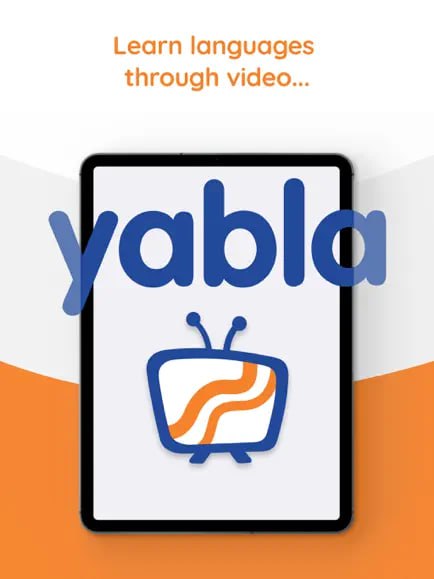
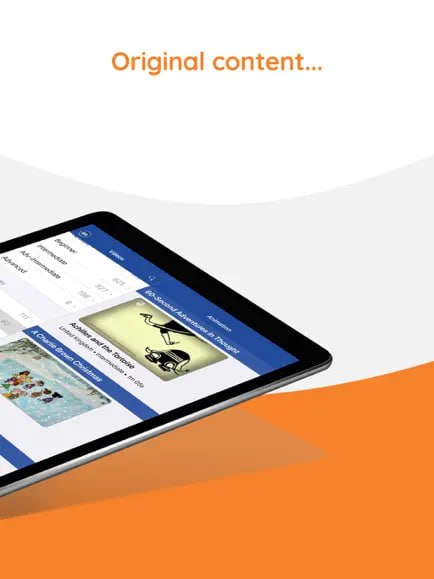
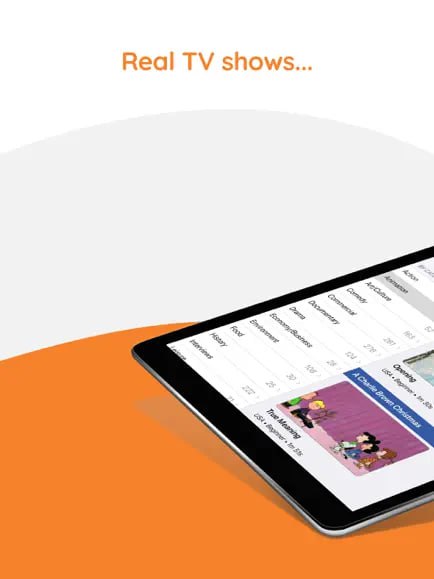
Key Highlights:
- Over 4,000 authentic Italian video lessons
- Interactive playback with comprehension games
- Real-time subtitles and vocabulary click tools
Who it’s best for:
- Intermediate to advanced learners
- Visual learners who enjoy real-life video content
- Students looking to improve listening and cultural fluency
Contact Information:
- Website: italian.yabla.com
- App store: apps.apple.com/us/app/yabla-italian
- Facebook: www.facebook.com/YablaLanguages
- Instagram: www.instagram.com/YablaLanguages
- Twitter: x.com/YablaLanguages

17. Clozemaster
Clozemaster is a powerful tool designed for learners who want to boost their vocabulary through contextual practice. It’s built around cloze (fill-in-the-blank) exercises using real sentences, which helps you internalize word usage naturally. With support for over 50 languages and multiple game modes, Clozemaster makes learning efficient, challenging, and surprisingly fun.
The app emphasizes fast-paced repetition, grammar inference, and long-term retention through spaced repetition. Clozemaster’s minimalist interface keeps you focused, while leaderboards and score tracking add a layer of motivation. It’s an ideal complement to other apps for learners who want to push beyond basic phrases.
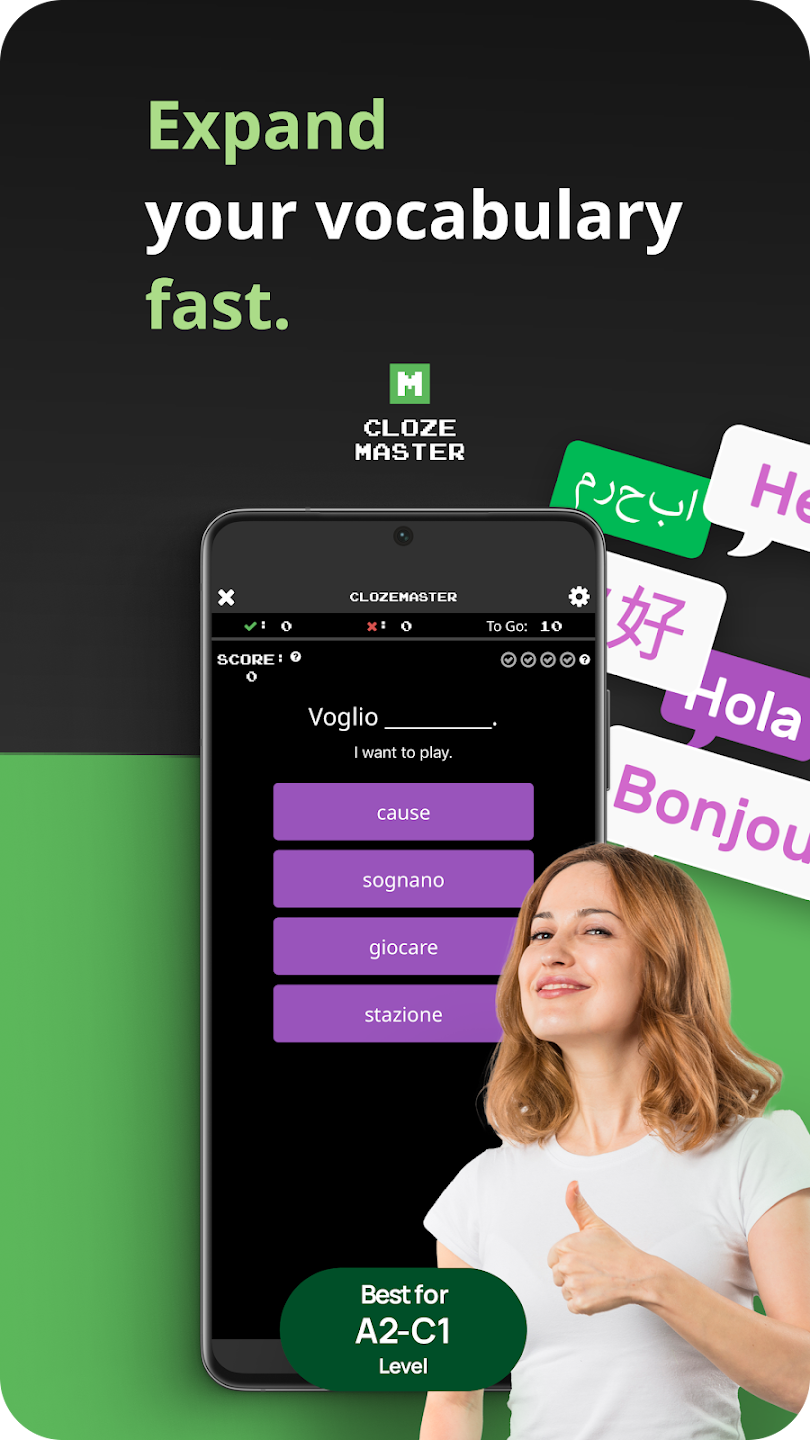

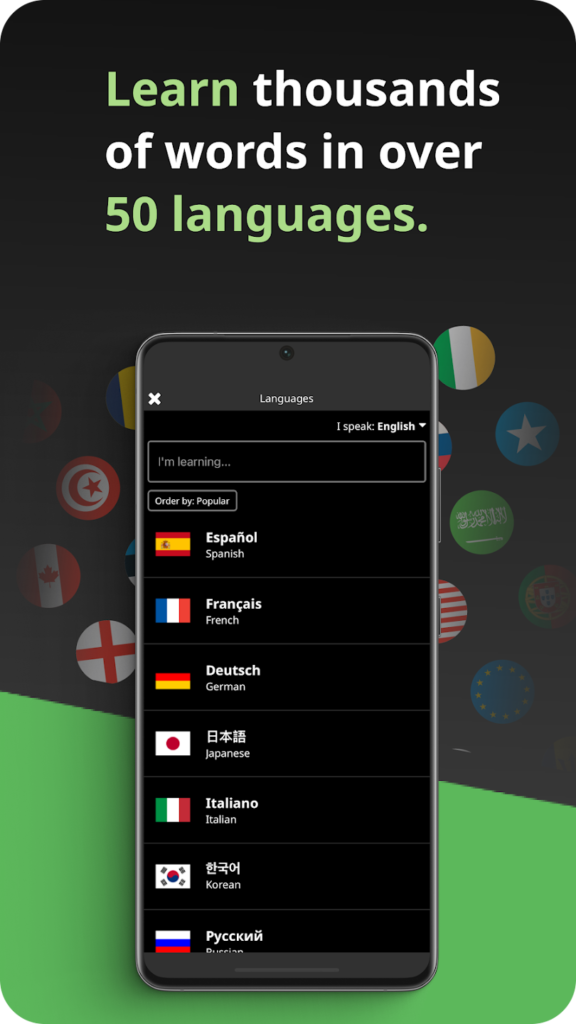
Key Highlights:
- Context-based sentence learning
- Cloze exercises to build vocabulary and fluency
- Gamified progress tracking and spaced repetition
Who it’s best for:
- Intermediate learners looking to expand vocabulary
- Users who prefer text-based learning and grammar through context
- Language nerds who enjoy challenges over fluff
Contact Information:
- Website: www.clozemaster.com
- App store: apps.apple.com/us/app/clozemaster-language-learning
- Google Play: play.google.com/store/apps/details

18. LingoClip (formerly LyricsTraining)
LingoClip makes learning Italian fun and effective by using music videos and lyrics. Users listen to songs and fill in missing lyrics in real time, training their ears to catch words and phrases in a natural and memorable way. Different game modes let you choose between typing in words, selecting options, or just singing along in karaoke mode.
As you play, you’ll improve listening comprehension, pronunciation, vocabulary, and even grammar without formal lessons. The built-in translation tool helps with unfamiliar words, while the leaderboard feature adds a competitive edge. It’s an ideal app for music lovers who want to turn playlists into study sessions.
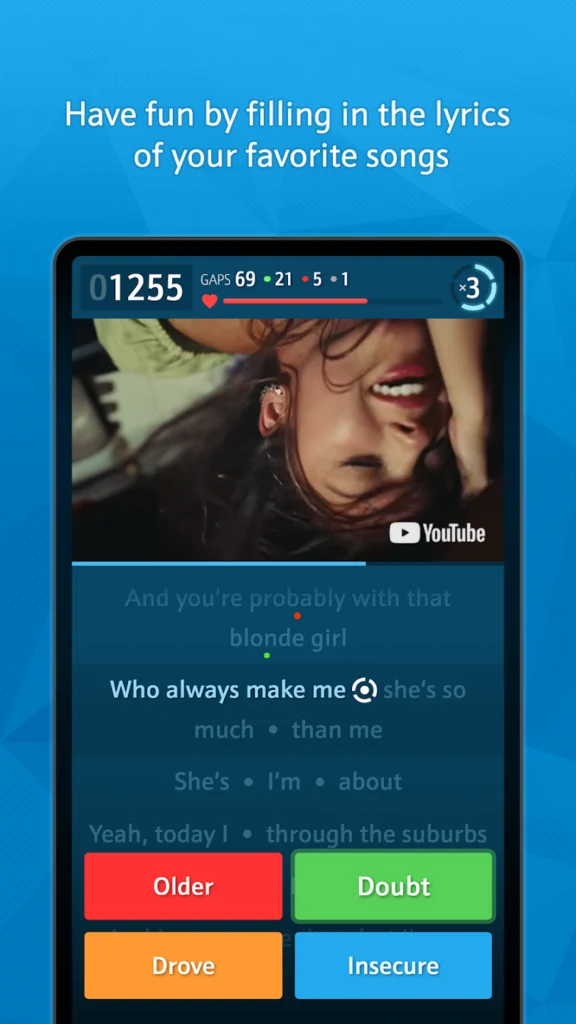
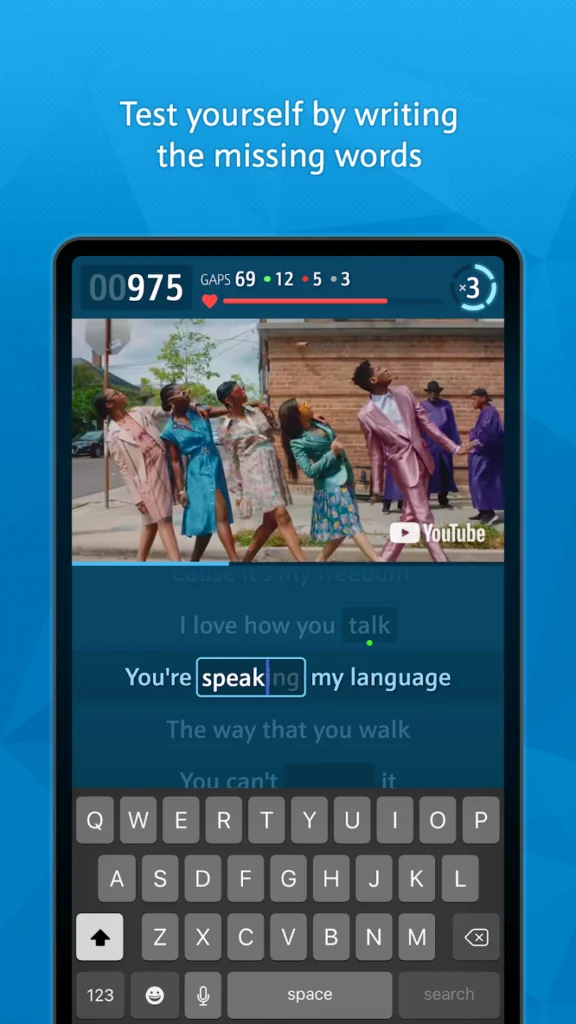
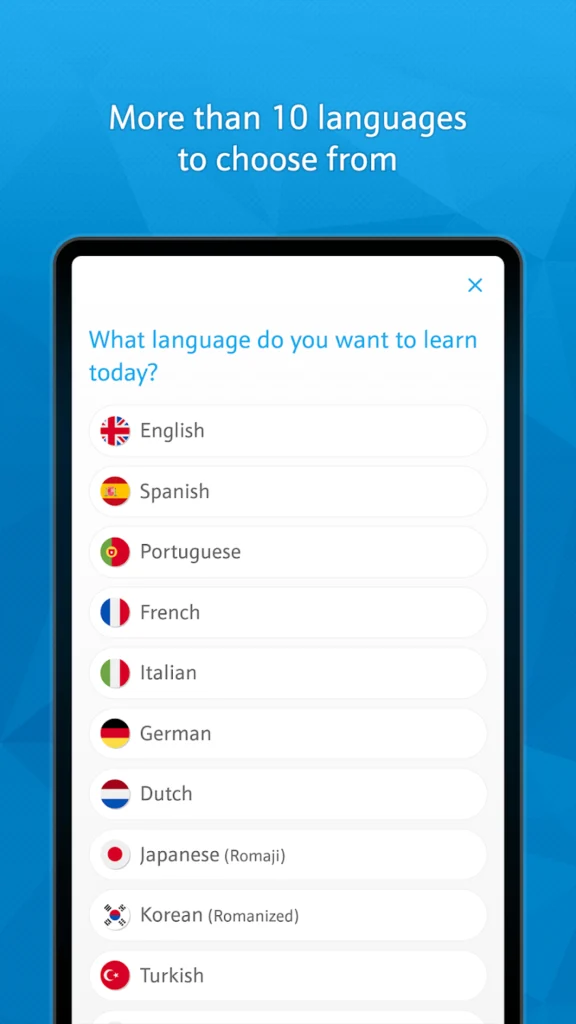
Key Highlights:
- Learn with your favorite Italian songs and videos
- Fun game modes for different skill levels
- Vocabulary boost through lyrics and repetition
Who it’s best for:
- Music lovers and auditory learners
- Learners who want immersive, stress-free practice
- Casual learners looking for a fun, low-pressure tool
Contact Information:
- Website: lingoclip.com
- App store: apps.apple.com/us/app/lingoclip
- Google Play: play.google.com/store/apps/details
- Facebook: www.facebook.com/lingoclip
- Instagram: www.instagram.com/lingoclip
- Twitter: x.com/lingoclip
Conclusion
Choosing the best app to learn Italian depends on your personal learning preferences, goals, and daily routine. Some apps offer a game-like experience, while others focus on grammar, conversation, or immersion. No matter which you choose, consistency is key. Try out a few, stay motivated, and you’ll be speaking Italian with confidence before you know it.

Leave a Reply
You must be logged in to post a comment.